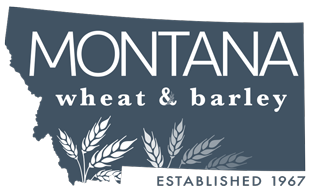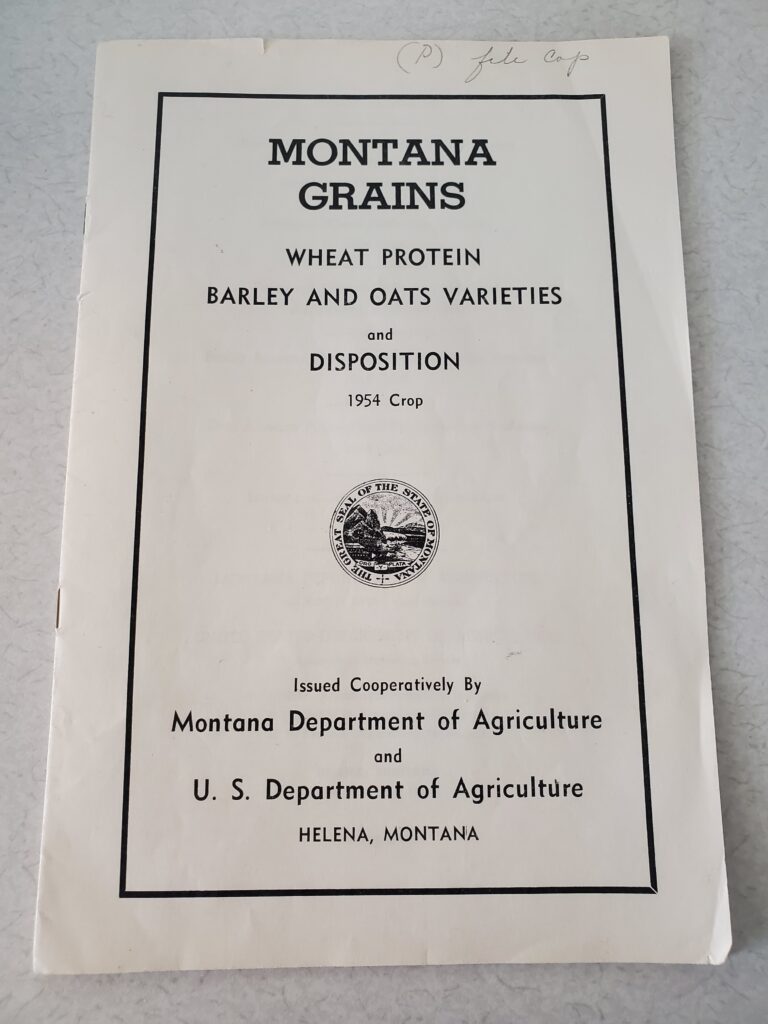-Sam Anderson
Tucked away in the National Agricultural Statistics Service office in Helena Montana, current director Eric Sommer shared with me Montana agriculture statistics booklets for the 1954 crop. Called Montana Grains, wheat protein, barley and oat varieties and disposition. In 1954, John Hugo Aronson was Montana’s Governor and Albert H. Kruse was the Montana Department of Agriculture’s Commissioner.
In this booklet there are some interesting details related to the 1954 crop that are worth sharing. Most notably the protein premiums our grandparents were getting.
From Page 4. Montana Wheat Protein…
Montana is favored by climate and soils suitable for growing of good quality wheat of high protein content. Premiums are regularly offered for wheats of high protein content and in recent years the premiums have been unusually high. In some instances, the premiums for wheat containing 17 percent and more protein have amounted to one-third of the selling price.
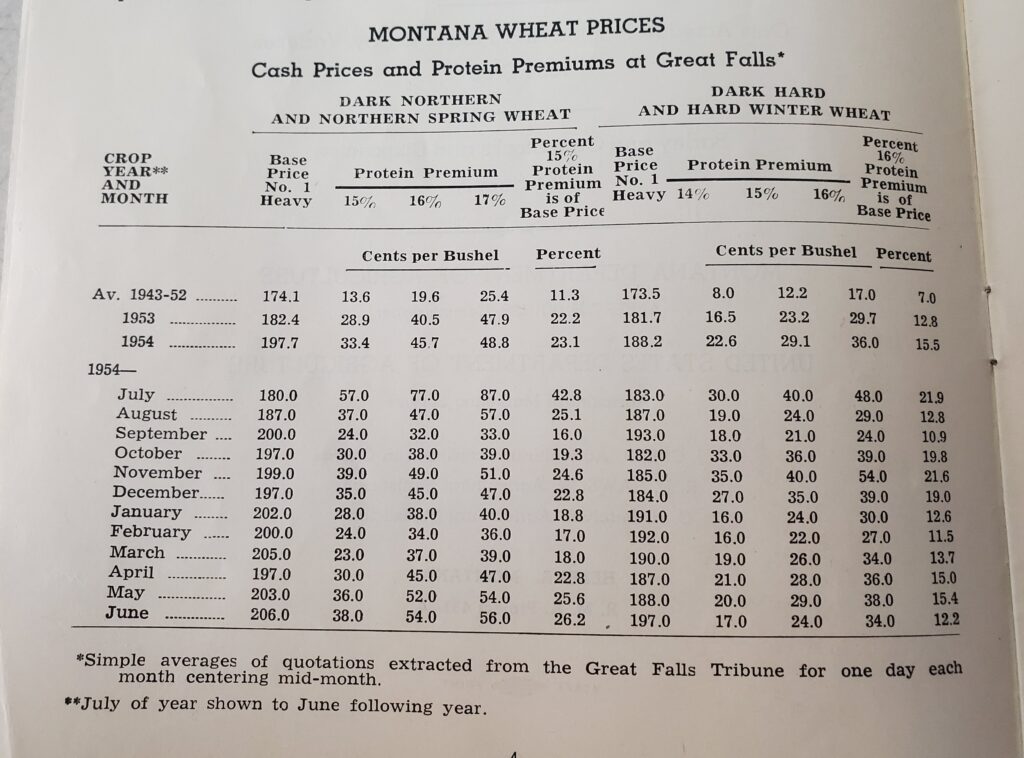
The bumper 1953 spring wheat crop, grown with abundant supplies of moisture, contained much less protein and only 28% of the production came under the 15 percent and more protein category. Protein development was better in 1954 and about 51% of the spring wheat crop was in the high protein group.
The 1954 protein premiums ranged from $.23/BU to $.87/BU for 15%-17% Protein with a base price ranging from $1.80/BU to $2.06/BU. In today’s dollars that would be a premium $2.55/BU to $9.63/BU, and a base price of $19.92/BU to $22.80/BU. Based on the U.S department of labor and statistics consumer price index.
1954 Production:
Winter Wheat: 34 million bushels
Spring Wheat: 43 million bushels
1953 “Bumper”:
Winter Wheat: 29 million bushels
Spring Wheat: 85 million bushels
2022:
Winter Wheat: 59 million bushels
Spring Wheat: 61 million bushels
2020 “Bumper”:
Winter Wheat: 75 million bushels
Spring Wheat: 123 million bushels
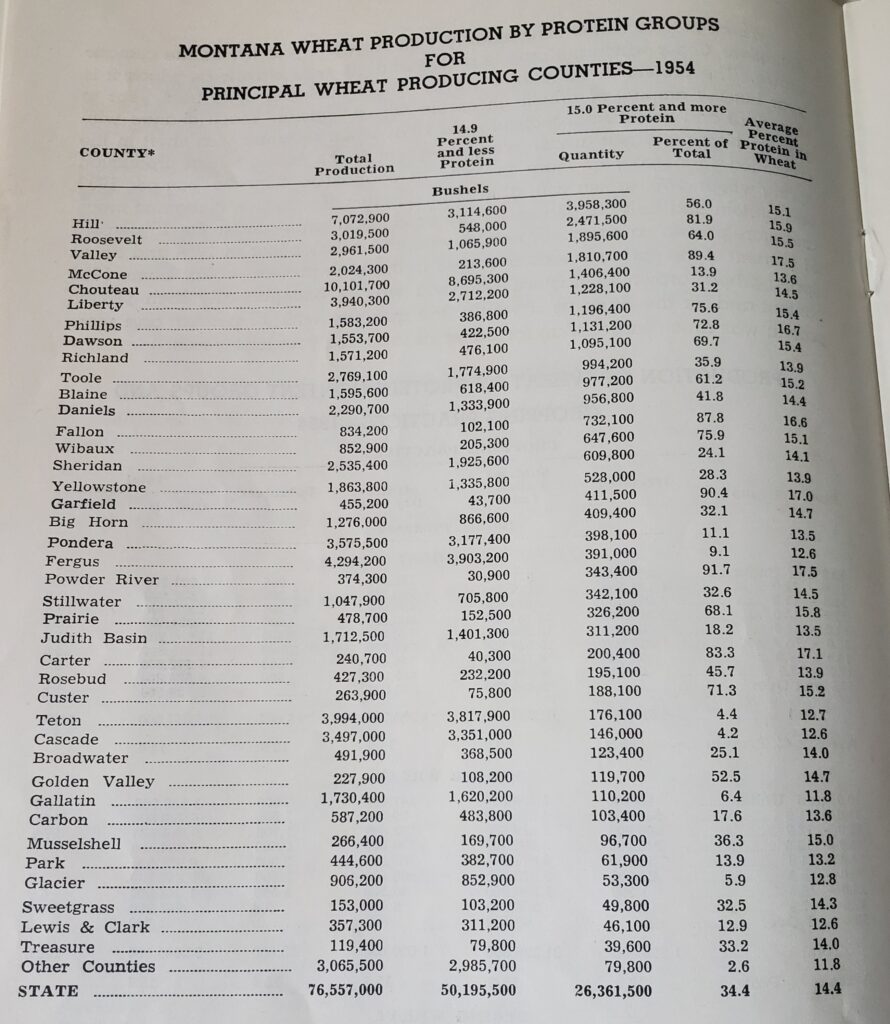
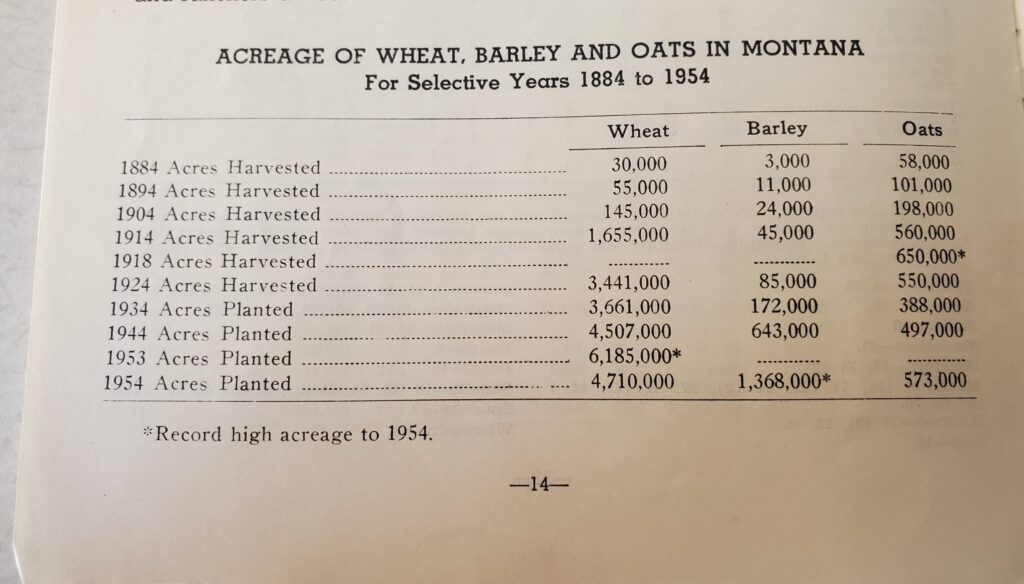
2022 Planted Acres:
Wheat: 4.7 million acres
Barley: 1 million acres
Oats: 75,000 acres
There was no wheat and barley committee and no U.S Wheat Associates yet the state of Montana and NASS pulled off a very detailed statistical booklet that in many ways I still wish existed in this way. Categorizing protein levels by production and by county must have been a huge effort. We do things much differently now, we have collective efforts between state wheat commissions, NASS, wheat quality labs and U.S Wheat Associates to develop yearly bulletins found HERE. Surprisingly sample size now is much smaller than the 1954 efforts due to the extensive testing done to each sample.
In 2022, efforts have begun to shake up the data and quality collections efforts once again. Digitizing and visualizing all the quality data for spring wheat and winter wheat. This time, we are anticipating this new program development to bring transparency to a whole new level. Click here. Scroll below the video and you will find the “Spring Wheat Dashboard”. Click around and tell us what you think! We do have full versions with more details and graphing features. Contact us to learn more.
Concluding with the same sentiment 68 years ago that still apply today: Montana is favored by climate and soils suitable for the growing of good quality wheat of high protein content.
